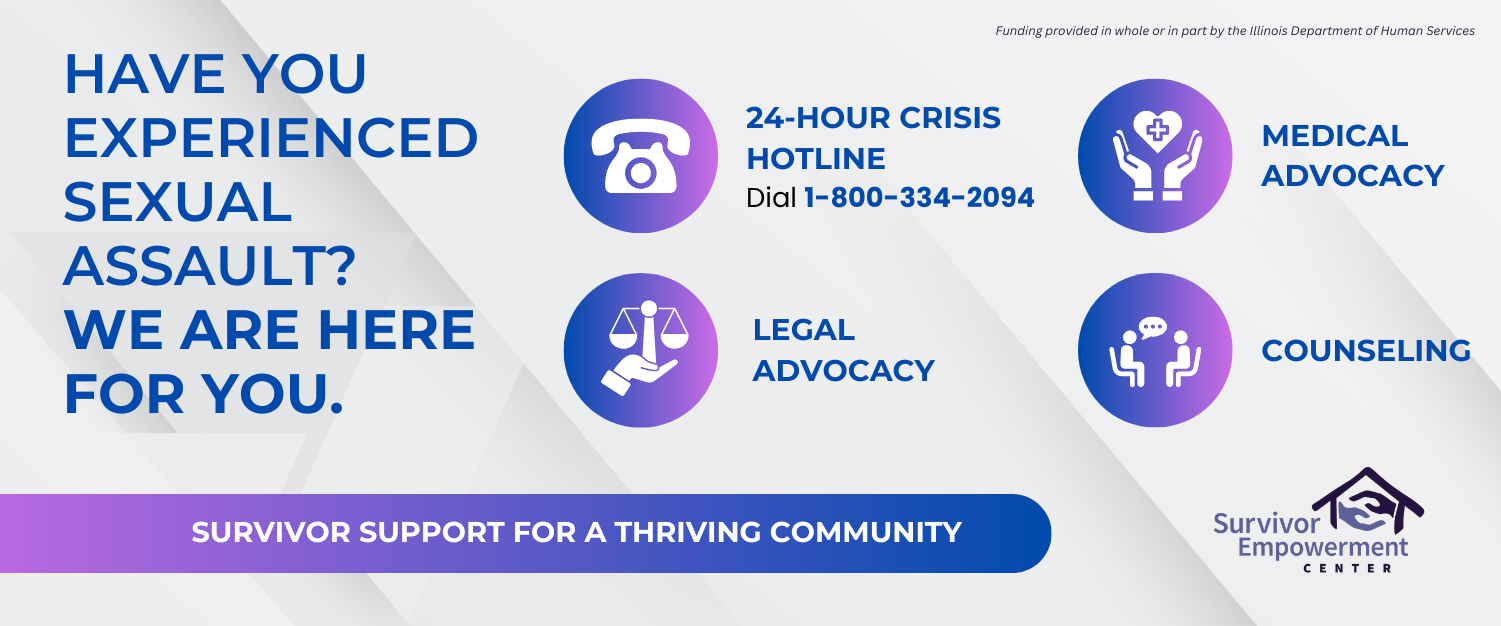Southern Illinois cranking up methamphetamine use
February 11, 1998
The methamphetamine capital of America is just one state away, and some area law enforcement officials believe the drug is infiltrating Southern Illinois.
Though many recognize that meth is in the area, opinions are divided on how serious the problem is. Investigations in recent years have uncovered an increase in its manufacture and use, yielding the busting of labs.
The concept is coming over from Missouri and is spreading across the area, said Tom McNamara, director of the Southern Illinois Enforcement Group.
Advertisement
McNamara said Missouri had more identified methamphetamine labs in 1996 than any other state in the nation. In its February 19 issue, Rolling Stone magazine recently declared Jackson County, Mo., the methamphetamine capital of the world. Kansas City is located in Jackson County, Mo.
In 1996, the Drug Enforcement Administration shut down 235 clandestine labs in Missouri, 80 more than it shut down in California, which has been the perennial leader in meth manufacturing. Only two labs were identified in 1992 in Missouri. In 1997, that number increased to 455.
Methamphetamine use and trafficking is notorious among biker gangs in California.
Due to ongoing investigations, McNamara could not elaborate on how extensive the meth problem is in Southern Illinois but said there were more than a half dozen labs identified in Southern Illinois last year.
Methamphetamine, also known as speed, crank, crystal and ice, can be smoked, snorted, orally ingested or injected. Research shows meth releases high levels of the neurotransmitter dopamine, which stimulates brain cells, causing enhanced mood and increased body movement.
Methamphetamines stimulate the central nervous system and the effects may last anywhere from eight to 24 hours. Meth users often binge and go days without sleeping. Its high is more intense and lasts longer than that of cocaine or crack. A June 1997 study by the White House Office of National Drug Control Policy indicated that many longtime crack addicts are switching to meth.
Meth is also much cheaper than cocaine which may have earned it the title poor man’s cocaine.
Advertisement*
McNamara said while street values of meth and cocaine are fairly similar, about $100 a gram, wholesale values of meth are considerably lower than that of cocaine.
He said meth usually runs about $6,000 to $8,000 a pound compared to cocaine, which runs about $12,000 a pound.
Meth causes a severe crash after the effects wear off. The crash is more intense and longer lasting than that experienced with cocaine.
The Drug Enforcement Administration reports that users may experience feelings of suspiciousness, hyperactive behavior and dramatic mood swings. Abusers tend to engage in violent behavior and change from friendly to hostile quickly.
The National Clearinghouse for Alcohol and Drug Information states that effects of methamphetamine use include anxiousness, nervousness, depression, aggressive and violent behavior, fatal kidney and lung disorders, brain damage, hallucinations and death.
Fred Gray, a counselor at Gateway Foundation, 318 E. Walnut St., said that most of the clients he encounters that have used meth now say they wish they never had.
At the point they start using meth they realize that it is out of control, Gray said.
We are definitely seeing more use of meth in the last year. A couple of years ago we had never heard of adolescents using meth, but in the last year there has been a large percentage of our clients that have used it.
I even have clients who know where actual labs are and a few have even participated in the production of it.
Chad and Sharon (not their real names) are clients of Gray’s and both think methamphetamine has been more accessible in the last few years. They attribute its popularity to the fact that it is cheaper than many drugs and has a longer-lasting high.
Anyone with as basic knowledge of chemistry can set up a meth lab and produce meth in a few hours. Most of the ingredients needed for meth as well as the equipment needed can be acquired at local grocery and hardware stores.
A simple search of methamphetamine on the Internet yields several recipes, as well as tips from other cookers on the best ways to cook meth. The Internet also provides information on how to purchase Secrets of Methamphetamine Manufacture by a man known as Uncle Fester. This book is regarded by some as the meth cooker’s bible.
Books such as the Merck Index, which can be found in Morris Library, also provides all the information needed to manufacture meth.
Credit is given to Japanese chemists for first manufacturing meth in 1917. Combat pilots on both sides during World War II are said to have used meth because of its ability to mimic adrenaline and its fight or flight property, according to an article in the Feb. 19 issue of Rolling Stone.
There have been three distinct meth epidemics in the history of the United States:one in the 1950s, a second in the late-1960s and the current wave of the mid-1990s.
Methamphetamine surfaced commercially in the United States in the 1950s in the form of pep pills. It was most commonly used by truckers and college students in need of a way to stay awake for long periods of time.
It took its toll on the San Francisco hippie community of Haight-Ashbury in the late ’60s. A fatal mixture of pharmaceuticals and subculture caused the drug to retreat from the mainstage until the late ’80s when biker gangs in California began smuggling ephedrine, one of the main ingredients in meth, in from Mexico and setting up their own labs.
Government regulations began to reduce the availability of ephedrine and some cookers began to use pseudoephedrine, the main ingredient in over-the-counter cold remedies such as Sudafed, to manufacture meth.
The pills are crushed into powder form, and then the pseudoephedrine is separated using water and methanol. The resulting substance is mixed with a concoction of red phosphorus and black iodine in a process requiring careful temperature control.
The brew must be stirred or shaken with toluene, more commonly known as paint thinner. The resulting paste is spread out to cool for a few hours. The crystals left behind are pure meth.
Some cooking methods there are more than 30 give off noxious smells and toxic fumes. For this reason, meth labs are often located in, but not confined to, rural areas.
McNamara said the method used in the labs in this area is particularly inexpensive and easy.
For $167 spent on materials, a cooker can easily make $2,000 worth of meth.
Sitting on the old blue couch in the small counseling room, Chad and Sharon look like ordinary teenagers, but the last few years of their lives have been anything but ordinary.
Chad and Sharon are recovering methamphetamine addicts going through an outpatient treatment program at the Gateway Rehabilitation center in Carbondale.
Chad, 19, has a mild-mannered disposition and is wearing a black, hooded Nike sweatshirt with blue jeans and white Reebok high-tops. With big, blue eyes, dark hair and braces he looks like the average boy-next-door.
Sharon, 15, is a soft spoken with brown eyes. She sits nervously at the corner of the couch playing with her long, blond hair.
Both Chad and Sharon live in Makanda with their families. They both go to high school in Carbondale. They say they both come from good families that are very supportive.
Chad begins to speak, his words coming steadily and clearly, but his eyes seem to focus on something far away, across the room.
When I was younger I never wanted to do anything. I was against everything. If someone came up to me and asked me if I wanted to get high, I was just like, get out of my face.’
Then my eighth-grade summer, I got high for the first time ’cause all my best friends started to get high, and when I was high I began to wonder what it would be like to be high off other drugs. Then I started drinking and doing a lot of other drugs.
The first time I ever smoked crack, I had always been like F*** that. That is sick. I’ll never do that.’ But I was with a friend and we met this guy that said if we got him high he would get us high.
So we smoked some pot with him and then he handed us a rock and I was like No way.’ But my friend talked me into it, and after that we started smoking it a lot.
Sharon said her parents and brother always smoked marijuana, and so she never thought anything of it. She got high for the first time in her backyard, with her brother and a neighbor.
Sharon said she first started smoking marijuana in seventh grade and then started drinking and doing other drugs.
Nitrous and inhalants were my first thing, she said. It wasn’t until later that I started getting into some of the heavier drugs.
Sharon said the first time she used meth she was on a lot of other drugs.
I was taking Prozac and morphine. I was a pill freak, and then I main-veined meth, she said. I kept main-veining for six months before I got arrested and had to quit.
[Meth’s] bad, though, because you don’t think about anything because you don’t care.
Certain experiences have helped Chad and Sharon to see they had a problem and needed help.
For Sharon, her arrest helped her realize the need for help.
Chad remembers one time when he was taking tranquilizers and overdosed. He was driving around in his car and kept taking the pills. He was unable to remember what kind of pills or how many he had taken. He was sitting in his car and passed out. He awoke when a police officer came and knocked on the window of his car, but he was too drugged up to do anything. His eyes were rolled back in his head. Chad was rushed to the hospital where his stomach was pumped and the doctors told him he almost died.
Sharon and Chad are both clean now. Chad says he has not done any drugs in about eight months.
Both of them agree programs such as Drug Awareness Resistance Education and Just Say No were good programs. However, they think there is not emphasis placed on drug resistance education these days.
I remember back in the ’80s you would see it all over TV and everywhere, you know Don’t do drugs’ and all that, Chad said. You never see that anymore. Instead you see people getting high on TV programs.
Sharon says the entertainment industry plays a major role in influencing America’s youth.
Now, you’ve got movies like Dazed and Confused’ and Trainspotting’ and Half Baked, she said. They glamorize drugs and make it seem like it is all good and nothing ever goes wrong.
They don’t show all the trouble that comes with it.
Both Chad and Sharon have been in the rehabilitation program at Gateway for a year now. Chad said he would have been out already, but he relapsed and has to remain in the program longer. Sharon said she has relapsed so many times she has lost count.
I wouldn’t come here for months at a time. I would get drugged up and then I got arrested and I had to come here, she said. But I didn’t want to quit, and if you don’t want to quit then you are not going to do it.
I think that if it weren’t for this program, I would have dropped out of school and be going nowhere.
Chad said programs like the one at Gateway are helpful.
Most kids that get on drugs, if they don’t go through a program like this, they never learn, he said. They never learn where it leads to.
Sharon said she would like to stay clean and finish the program but it is difficult. She said that if she’s around someone who rolls up a joint, it is hard to say no. She said the consequences are the last thing she thinks of.
It’s an addiction. You love it, Sharon said. You don’t think about the consequences.
Sharon and Chad have real dreams. She wants to finish high school and go to college. She would also like to get married and have a family someday. This was put on hold by her addiction, and she said she feels like she lost a few years of life and may never escape the problems created by her addiction.
It just f***ed everything up. I made Fs my freshman year and got kicked out of school several times, and that will always be on my record, she said. Colleges will see that, and it will hurt my chances. Drugs just screwed up everything for me and it will take a lot to rebuild that.
Chad wanted to play football but said now he is just concerned with staying clean and getting his diploma.
Right now I am just trying to get my life back of track, he said. I’m back in school, I’m 19 years old and I have my whole life ahead of me.
Law enforcement officials in Southern Illinois are still divided on whether methamphetamine is a problem or is becoming a problem in Southern Illinois. Illinois State Police Mst. Sgt. Bill Stanhouse said that in Williamson County, methamphetamine is not viewed as a problem.
We are seeing some problems farther south around Randolph County, Stanhouse said. But in Williamson County most of our problems are still with crack and marijuana.
Stanhouse said there was one major bust a few weeks ago. A lab was busted and one pound of meth was seized.
Ralph Friedrich of the Organized Crime Drug Task Force Unit in the Illinois States Attorney’s office said his office had been prosecuting more cases of methamphetamine manufacturing in Southern Illinois. He said there was a definite increase in the number of cases regarding manufacturing, and meth is considered a problem.
Friedrich would not comment on any ongoing investigations.
McNamara said they are not dealing with the typical drug distribution system in this area.
He said there are three kinds of distribution systems. The first is the organized Mexican criminal cartels running meth out of Arizona, New Mexico and California.
The second type is the regional lab that utilizes a certain type of manufacturing method and serves an area of several counties to several states.
The third type is the most unusual, he said. These Nazi labs, named for a production method that originated in Nazi Germany, are surfacing in Southern Illinois.
These labs are based on a cell structure, McNamara said. There are usually like 10 people with one guy that can cook.
He said these labs sell locally and often some of the meth is used by the cooker.
These small systems are unique and we have to investigate them individually, McNamara said.
McNamara said they are trying to establish investigative outlines on how to deal with this system and are training first responders to the scene on how to deal with the situations.
He said this will not only involve the police but also emergency medical teams and the fire department.
There were 455 labs identified in Missouri last year and hundreds identified in Kentucky and Arkansas also, McNamara said. We know it’s out there.
We are not so foolish as to think we are not going to have the same problem if we don’t do something about it.
We have a saying here, Speed Kills.’ Factoid:Anyone with a methamphetamine problem can get help from the National Drug Information Treatment and Referral hot line, (800) 662-HELP.
Advertisement









